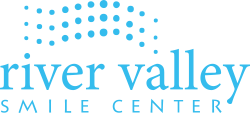The term ‘oral screening’ refers to the act of looking for oral cancer before a patient shows any noticeable symptoms. Finding cancer during the early stages makes treatment easier and more effective and thus oral cancer screenings are a very important part of your oral hygiene.
Scientists are still trying to better understand oral cancer, where it comes from, and which type of people (if any) are more likely to develop this type of cancer. Having a better understanding of oral cancer means that doctors can more efficiently and productively use screening tests to find oral cancer in patients.
The Oral Screening Process
The oral screening process takes only about five minutes to complete and consists mainly of a thorough examination, inspection and palpation. During the exam the position in which you will lie may vary. If your oral screening is being performed by a dentist then you will likely be lying flat on your back, while we examine your oral cavity. On the other hand, if your oral screening is being performed by a physician, then you will likely remaining in the sitting position during the exam.
An external light source will be used during the exam to ensure that every crevice in the oral cavity is adequately seen. Using an external light source allows us to perform a hands-free exam, which allows for bimanual palpation and also the ability to hold a tongue blade and gauze which allow for improved visualization.
Before the exam you will be asked to remove all dental appliances. During the exam, gauze or an air syringe may be used to dry the surface of the oral cavity, which allows the examining party better visualization of color and texture changes within the cavity.
If your oral screening test comes back abnormal, then we will recommend further tests, called diagnostic tests, to look deeper into why the results of the screening were abnormal.

